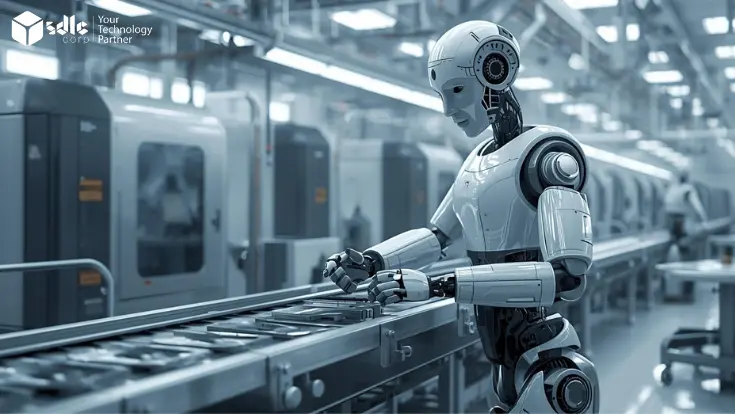Introduction
Physics simulation is a cornerstone of modern game development, adding a layer of realism and immersion that can significantly enhance the player’s experience. In Unreal Engine, powerful physics tools and features allow developers to create dynamic, interactive worlds where objects behave according to the laws of physics. From realistic collisions to complex vehicle dynamics, the possibilities are extensive. This article will explore the fundamentals of physics simulation in Unreal Engine, discuss key tools and techniques, and highlight the importance of hiring Unreal Engine developers to bring your vision to life.
Unreal Engine Game Development Company

Understanding Physics Simulation
Physics simulation involves using algorithms to replicate the natural laws of physics in a virtual environment. This includes simulating how objects interact with each other, respond to forces, and move through space. The primary objectives of physics simulation in games are to enhance realism and interactivity, making gameplay more engaging.
Key Benefits of Physics Simulation
- Realism: Simulated physics makes environments feel more authentic, contributing to player immersion.
- Interactivity: Players can interact with objects in meaningful ways, such as pushing, throwing, or destroying them.
- Dynamic Gameplay: Physics-based interactions can lead to emergent gameplay scenarios, where players can use the environment to their advantage.
- Enhanced Storytelling: Realistic physics can be used to convey narratives through environmental storytelling and character interactions.
Key Physics Features in Unreal Engine
Unreal Engine offers a robust set of tools and features for implementing physics simulation. Here are some key components:
1. Physics Engine
Unreal Engine incorporates the PhysX physics engine, which provides a wide range of physics simulation capabilities. Key features of PhysX include:
- Rigid Body Dynamics: Simulates the behavior of solid objects under various forces, allowing for realistic movement and collisions.
- Soft Body Dynamics: Simulates deformable objects, such as cloth or rubber, enabling realistic interactions with the environment.
- Particle Systems: Allows for the simulation of a large number of small objects, such as smoke, fire, or debris.
2. Collision Detection
Collision detection is critical for ensuring that objects interact realistically. Unreal Engine provides several collision detection methods:
- Simple Collision: Basic geometric shapes (boxes, spheres, capsules) are used for quick collision detection.
- Complex Collision: Uses the actual mesh of an object for more accurate collision detection, though it may be more resource-intensive.
- Collision Channels: Developers can define how different objects interact with each other, allowing for fine-tuned control over collision behavior.
3. Constraints
Constraints are used to limit the movement of objects in specific ways. Unreal Engine supports various types of constraints:
- Physics Constraints: Control how objects move relative to each other, such as hinges, springs, and sliders.
- Character Movement Constraints: Manage how characters move and interact with the environment, ensuring realistic locomotion and physics responses.
4. Destruction System
Unreal Engine’s destruction system allows for the simulation of realistic damage and destruction in environments. Key features include:
- Fractured Meshes: Developers can create destructible objects that break apart in a believable manner when subjected to forces.
- Damage System: Integrates with the health and damage systems to apply damage to objects and trigger destruction effects.
5. Vehicle Dynamics
Unreal Engine provides tools specifically for simulating vehicle dynamics. These features include:
- Wheeled Vehicle Movement: A built-in framework for creating realistic vehicle physics, including tire friction, suspension, and handling.
- Customizable Settings: Developers can tweak various parameters to achieve the desired vehicle behavior and performance.
Implementing Physics Simulation in Unreal Engine
To effectively implement physics simulation in Unreal Engine, developers should follow these steps:
1. Setting Up the Physics Environment
Before creating physics-based objects, it’s essential to configure the physics environment:
- Project Settings: Ensure that the physics settings are optimized for your project. This includes adjusting settings for gravity, collision detection, and overall physics simulation quality.
- World Settings: Configure the world settings to define how physics interacts with the environment, including enabling or disabling specific physics features.
2. Creating Physics Materials
Physics materials define how objects behave when they collide with each other. Developers can create custom physics materials to control:
- Friction: Determines how much resistance objects encounter when sliding against each other.
- Restitution: Controls how bouncy an object is when it collides with another surface.
- Density: Affects the mass of an object and how it interacts with forces like gravity.
3. Defining Collision Settings
Properly configuring collision settings is crucial for realistic physics interactions:
- Collision Presets: Use collision presets to quickly define how objects should react to collisions. Unreal Engine provides several predefined presets for common scenarios.
- Custom Collision Channels: Create custom collision channels to fine-tune interactions between different types of objects in the game.
4. Using Blueprints for Physics Logic
Unreal Engine’s Blueprint system allows developers to create complex physics interactions without writing code:
- Blueprints for Interaction: Use Blueprints to define how objects react to player input or other events. For example, a player might push a box, which would then respond according to its physics settings.
- Event Handling: Implement event-driven logic to trigger specific behaviors based on physics interactions, such as playing a sound when an object collides with another.
5. Testing and Optimization
After implementing physics simulation, thorough testing and optimization are essential:
- Playtesting: Test physics interactions during gameplay to ensure they behave as expected. Pay attention to any unusual responses or glitches.
- Performance Optimization: Monitor performance metrics to identify any bottlenecks caused by physics simulations. Adjust settings or simplify physics interactions as needed to maintain a smooth gameplay experience.
Unreal Engine Game Development Company

The Role of Unreal Engine Developers
Creating effective physics simulations requires specialized knowledge and skills. Hiring Unreal Engine developers can greatly enhance your project’s quality and efficiency. Here’s why:
1. Expertise in Physics Simulation
Experienced developers possess a deep understanding of Unreal Engine’s physics capabilities. They can implement complex simulations that enhance realism and interactivity, ensuring your game meets high-quality standards.
2. Custom Solutions
Every game has unique requirements, and hiring Unreal Engine developer for hire allows for tailored physics solutions that align with your project’s goals. Whether it’s creating specialized vehicle dynamics or implementing advanced destruction systems, skilled developers can bring your vision to life.
3. Performance Optimization
Unreal Engine developers are adept at optimizing physics simulations to ensure smooth performance across various platforms. They can identify potential performance issues and implement solutions to maintain a fluid gameplay experience.
4. Collaboration with Other Teams
Hiring Unreal Engine developers facilitates collaboration between technical and creative teams. Their expertise ensures that physics simulations align with overall game design, enhancing storytelling and gameplay mechanics.
Unreal Engine vs. Unity: A Physics Perspective
When comparing Unreal Engine and Unity for physics simulation, both engines offer unique strengths and weaknesses. Understanding these differences can help you choose the right platform for your project.
Unreal Engine Strengths
- Advanced Physics Engine: Unreal Engine’s PhysX engine provides robust support for a wide range of physics simulations, making it ideal for complex interactions.
- Visual Fidelity: Unreal Engine excels in creating high-quality graphics, ensuring that physics interactions appear realistic and engaging.
- Built-In Tools: The engine includes built-in tools for vehicle dynamics, destruction, and character movement, streamlining the development process.
Unity Strengths
- Accessibility: Unity’s user-friendly interface and extensive documentation make it accessible for developers at all levels.
- Lightweight Physics Engine: Unity’s physics engine is lightweight, making it suitable for projects that prioritize performance over complexity.
- Large Community: Unity has a vibrant community that provides ample resources, tutorials, and plugins for physics simulation.
Unreal Engine 5 vs. Unity: The Future of Physics Simulation
With the release of Unreal Engine 5, the capabilities for physics simulation have expanded significantly. Key advancements include:
1. Enhanced Performance
Unreal Engine 5 introduces improved performance optimizations, allowing for more complex physics simulations without sacrificing frame rates. This advancement makes it possible to create intricate interactions that were previously challenging to implement.
2. Real-Time Global Illumination with Lumen
The Lumen lighting system in Unreal Engine 5 enhances the realism of physics interactions by providing real-time global illumination. This feature allows for dynamic lighting that reacts to changes in the environment, improving visual quality during physics simulations.
3. Comparison to Unity
While Unity has made strides in enhancing its physics capabilities, Unreal Engine 5’s advancements in rendering and performance set it apart, especially for projects that rely heavily on complex physics simulations. Developers looking to create visually stunning, physics-rich environments may find Unreal Engine 5 to be the superior choice.
Unreal Engine Game Development Company

Conclusion
Procedural generation is revolutionizing the way games are developed, enabling creators to produce rich, expansive worlds with remarkable efficiency. Unreal Engine offers a suite of powerful tools and techniques that facilitate procedural generation, making it a top choice for developers looking to innovate. Partnering with an experienced Unreal Engine Development Company can help you fully utilize features like Blueprints, the Landscape system, and procedural mesh generation. An Unreal Engine Development Company ensures that procedural generation is implemented effectively, aligning with your project’s goals and enhancing gameplay. Hiring a skilled Unreal Engine Development Company is essential for maximizing the potential of Unreal Engine’s tools, providing technical support and expertise. To create unique, dynamic worlds that captivate players, collaboration with an Unreal Engine Development Company is crucial for achieving innovative and immersive gaming experiences.




